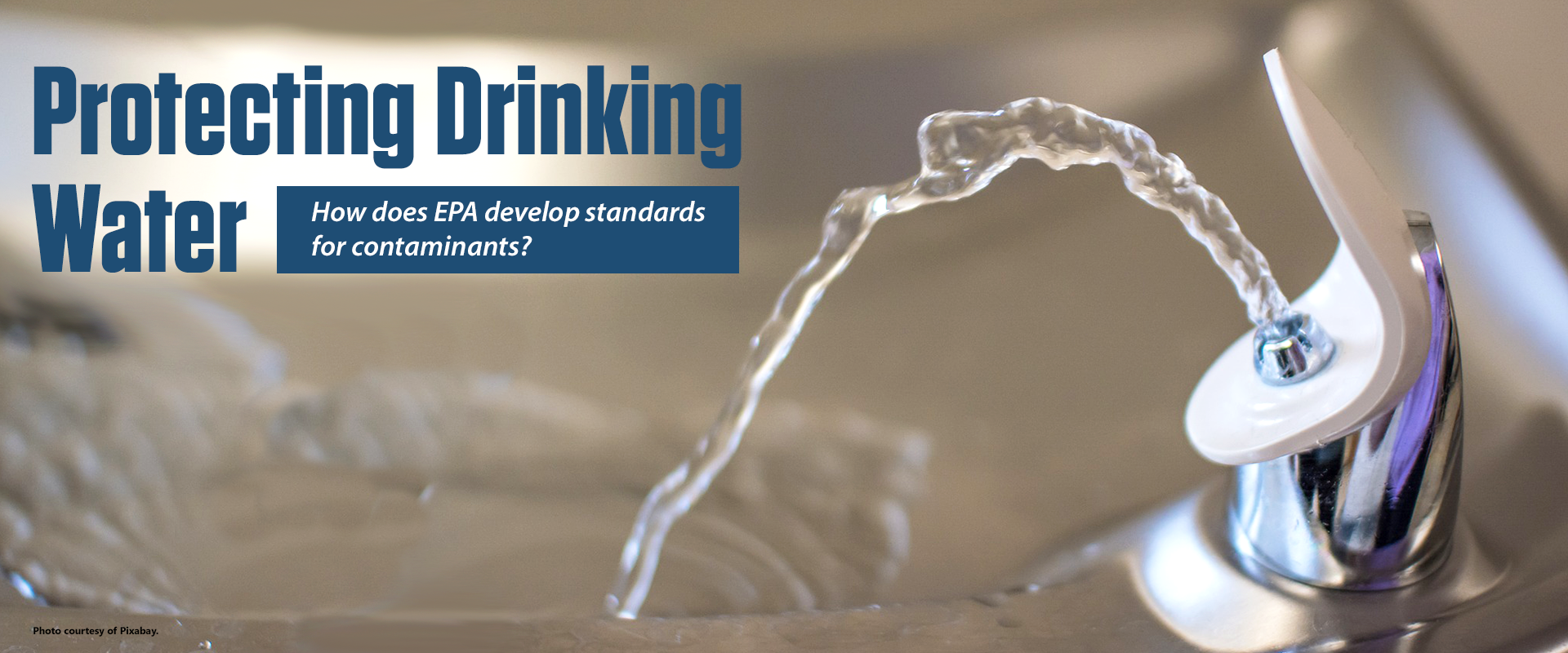Throughout history, arsenic has been known as both a poison and a healer. Nicknamed the “king of poisons and poison of kings” since the time of the Roman Empire, it can cause intestinal problems and death after acute exposure and is linked to cancer, cardiovascular disease and diabetes after long-term exposure.
Both naturally occurring in the environment and released through human activity, arsenic was first formally recognized as a problem in the United States in 1942. The U.S. Public Health Service created the first arsenic drinking water standard for interstate water carriers, establishing 0.05 milligrams of arsenic per liter of water as the safe limit.
After the Safe Drinking Water Act (SDWA) was established by the U.S. Environmental Protection Agency (EPA) in 1974, arsenic was one of the first drinking water contaminants to be regulated, upholding the same 0.05 milligrams per liter limit. That limit held all the way through 2001, when the maximum contaminant level (MCL) limit was lowered from to 0.05 milligrams per liter to 0.01 milligrams per liter, or 10 parts per billion (ppb).
The U.S. Environmental Protection Agency regulates certain contaminants under the Safe Drinking Water Act, which sets standards to protect drinking water.
More Information
- Toxicological Profile for Arsenic from the CDC’s Agency for Toxic Substances and Disease Registry
- Read the full text of the Safe Drinking Water Act
- EPA’s Contaminant Candidate List
- PFAS information from the EPA
Want to get txH20 delivered right to your inbox? Click to subscribe.
Arsenic is just one of the many contaminants that has been regulated by EPA under the SDWA since its establishment. Sometimes, how those regulations are made — and what happens once they’re made — can feel like a bit of a black box.
Under the SDWA, EPA sets standards to protect drinking water. When new contaminants are identified, they are added to the Contaminant Candidate List (CCL), which is published every few years. When the new CCL is published, EPA must decide whether to regulate a minimum of five contaminants from the list.
EPA decides what to do about those chosen contaminants based on health risk and high occurrence as well as on whether the EPA Administrator determines that the regulation of the contaminant presents an opportunity for risk reduction. EPA can choose from a couple of options for regulation — or lack thereof.

Some contaminants are regulated with legally enforceable National Primary Drinking Water Regulations (NPDWRs). Currently, there are NPDWRs for 90 drinking water contaminants, including arsenic. Certain treatment techniques (a required process) may be mandated, and an MCL may be established. In addition to setting an MCL, EPA sets a maximum contaminant level goal (MCLG).
MCLs and MCLGs are slightly different. The MCL is the highest contaminant level allowed in drinking water and is an enforceable standard, while the MCLG is the highest drinking water contaminant level for which no negative health effects are known. If there is evidence that chemical contaminants are carcinogenic and there is no dose at which the contaminant is considered safe, then the MCLG is set at zero, as is the case for arsenic. Meanwhile, the MCL — such as 10 parts per billion for arsenic — is set as close to the MCLG as is considered feasible. The MCLG is a public health goal, rather than a legal limit, and is therefore non-enforceable.
Sometimes, establishing an MCL may not be possible, such as when reliably measuring a contaminant at concentrations below those of public health concern isn’t possible. For these contaminants, EPA sets treatment techniques, which are enforceable procedures for controlling the contaminant. Controlling corrosion in lead and copper plumbing materials is an example of such a technique.
At least once every six years, each NPDWR comes up for review. During this review period, EPA assesses any new information and technologies related to the contaminant to see whether the regulation should remain the same or become more stringent.
If contaminants aren’t chosen for NPDWRs, they may receive a National Secondary Drinking Water Regulation (NSDWR). These contaminants are generally listed because they may cause cosmetic or aesthetic effects: They might discolor people’s teeth, like fluoride does, or make the water taste or look different, like iron and manganese do. At the set secondary MCL, these contaminants are not considered a risk to human health, and regulations regarding them are considered non-enforceable guidelines.
But what happens to all of the contaminants that don’t make it to the regulation phase? With a minimum of only five contaminants assessed for regulation every year, many contaminants remain on the CCL, sometimes for a long time. Per- and polyfluoroalkyl substances (PFAS), a group of pervasive and potentially carcinogenic chemicals, have been on the list since 2009. See the story “Pervasive Problem” for more on the problems of PFAS.
To help understand the still-unregulated contaminants on the CCL, EPA collects data on a maximum of 30 unregulated contaminants every five years under the Unregulated Contaminant Monitoring Rule (UCMR). Most of those contaminants are chosen based on the CCL. The current monitoring period is from 2017 to 2021 for UCMR 4, with UCMR 5 coming next.
In 2012, six types of PFAS were added to the UCMR 3 list to be monitored and studied. Though they were removed from UCMR 4 in 2016, they remain on the list of candidates for regulation.
CCL 4, the most recent available CCL, is from 2016 and has 97 contaminants on it. In February 2020, EPA proposed preliminary regulatory determinations for two kinds of PFAS from CCL 4. If finalized, those regulatory determinations could result in an NPDWR for those PFAS in the future. The deadline for submitting candidates to the CCL 5 was December 4, 2018. EPA is currently evaluating the nominations and other contaminant data and will later publish a draft CCL 5 for public review and comment.



